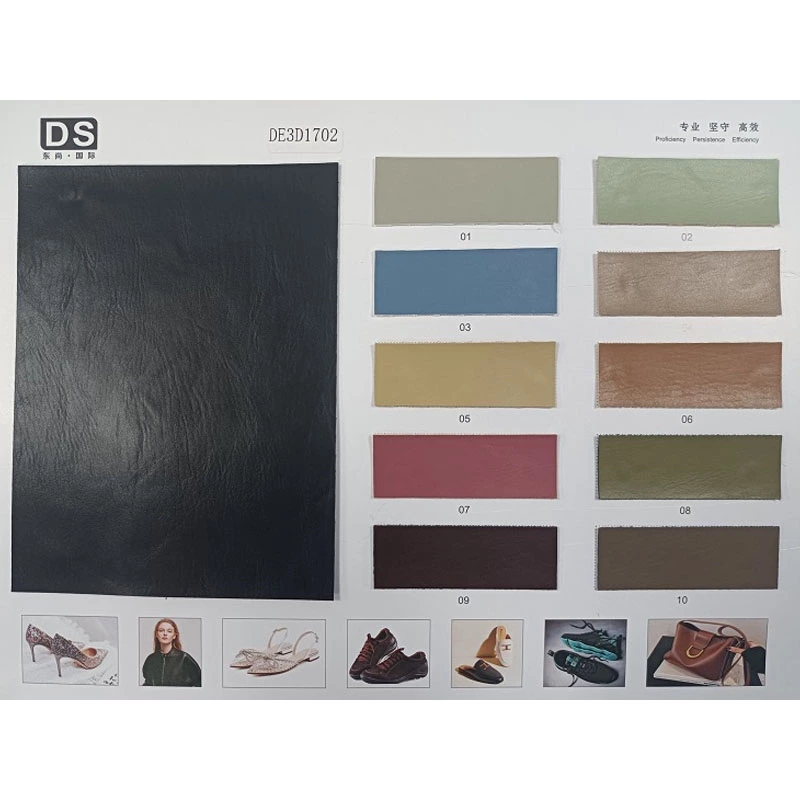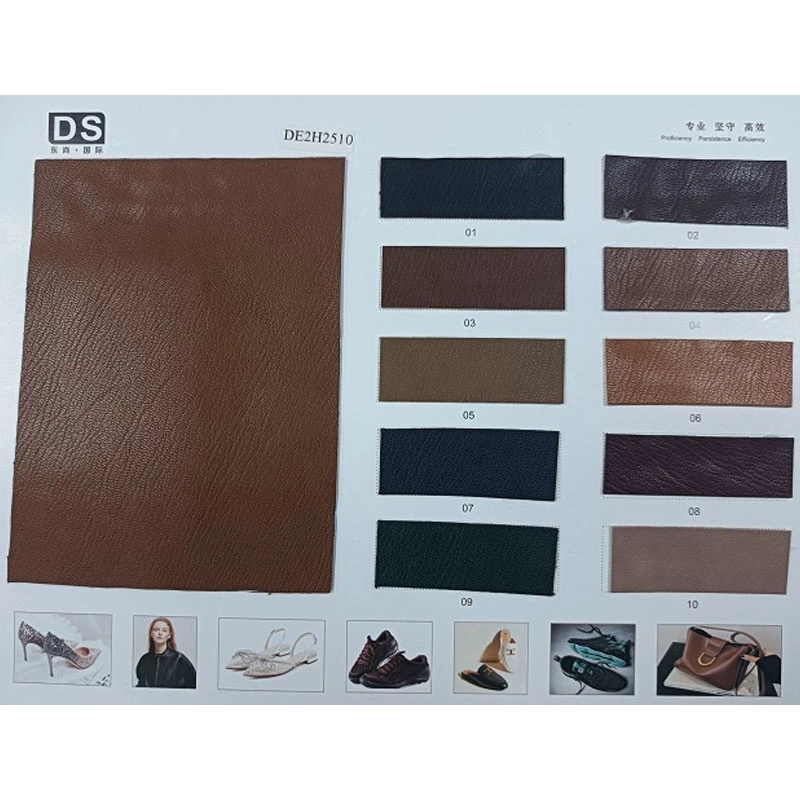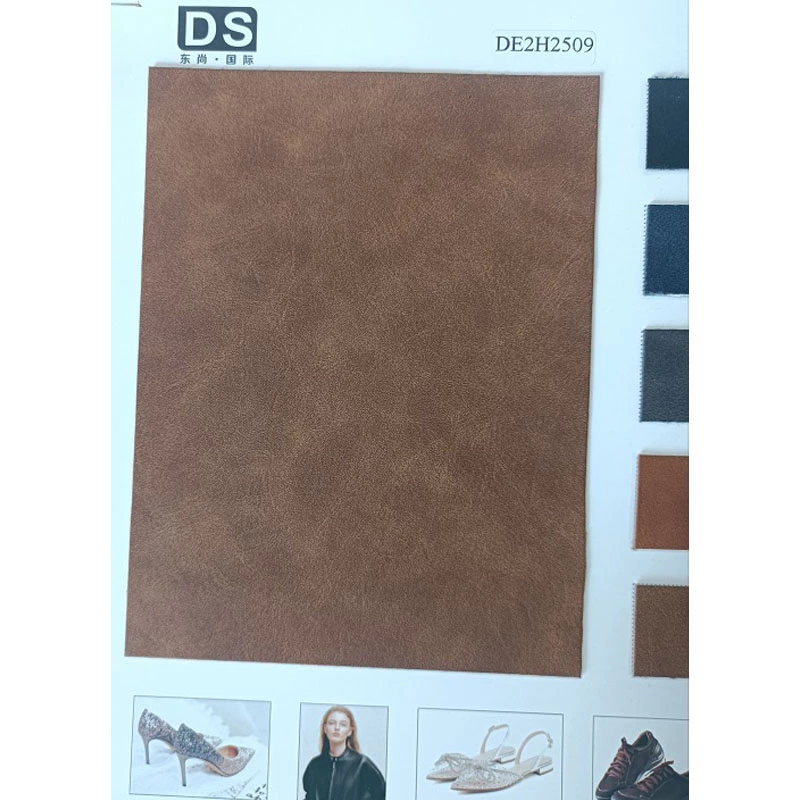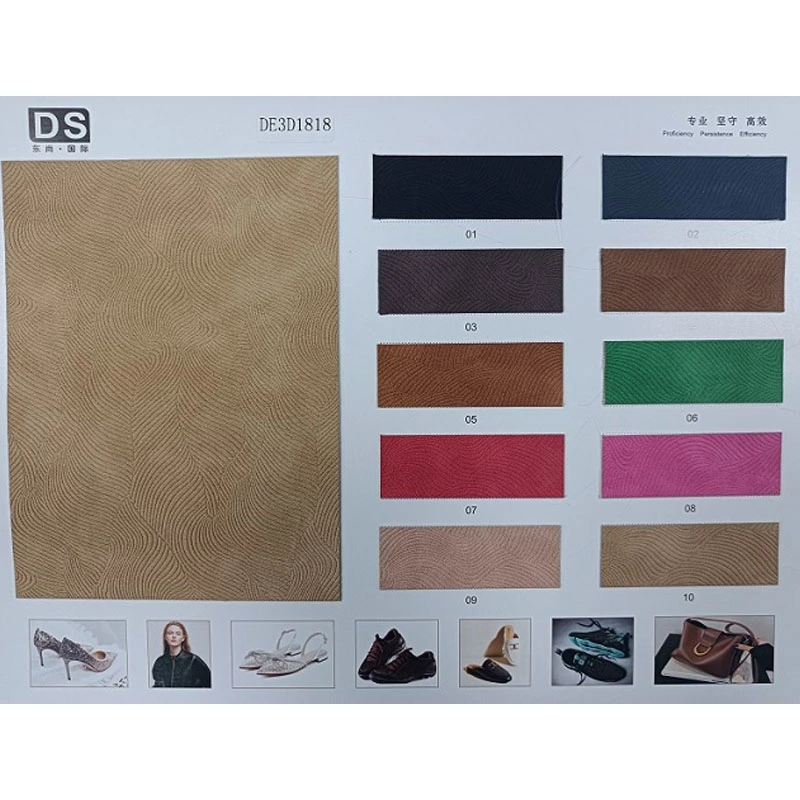Identification Of Leather Quality
PU Leather: The pores on the surface of genuine leather are oblate and small, arranged in a fish scale shape, usually several pores form a group, the leather is soft and very elastic. Pigskin: The pores on the surface of pigskin are round and large, and are relatively obliquely deep into the genuine leather. The pores are usually arranged in groups of three, and many small triangles (in the shape of a Chinese character "品") appear on the leather surface. The elasticity is poor and the leather is coarse. Cowhide: The pores on the surface of yellow cowhide are round, the pores are tight and relatively uniform; the pores on the surface of buffalo leather are coarser than those on yellow cowhide, but the number of pores is sparse, and the texture is not as delicate as that of yellow cowhide. Horsehide: The pores on the surface of horsehide are oblate and clearer than sheepskin, the leather is harder, the pores are arranged in a very regular pattern, and several pores are arranged in a group, and the feel is rough and hard.
2. About the price For work clothes: sheepskin is the best, cowhide is the second, goatskin is the third, and pigskin is the last; The price of sheepskin clothing varies according to the finishing process. The market price of 0.65 thick thin leather is about 700-900 yuan/piece, and the medium. Goatskin feels slightly harder, but has better fastness, and the price is 50-150 yuan lower than sheepskin/piece; Pigskin is divided into the first layer and the second layer. The perfect surface and suede surface, and there is a difference between washed and unwashed. Washing is more expensive. The first layer is nearly half the price of the second layer, and the price of half the first layer suede is 450-550 yuan. The reference price is different according to the brand. Market price (ex-factory price): Sheep skin: 16-20 yuan/square foot Cowhide: 30-35 yuan/square foot Artificial leather: 10-15 yuan/meter; Synthetic leather: 15-25 yuan/meter; Super Fiber: 60-120 yuan/m (1.42 square meters) The price of effect leather is 10-20% higher than that of general leather
Factors that determine the price of upper leather (synthetic leather) Type and thickness of base fabric (microfiber non-woven fabric > general base fabric); Color, scratch resistance (white > dark) Pattern (color, multi-color > single color) Texture Effect and function Wet method > dry method Ecological safety
3. About quality 1) Air permeability (hygienic performance/comfort) Genuine leather > artificial leather; Genuine leather grain leather > genuine leather face leather (split leather, embossed leather, lacquer leather, etc.); Synthetic leather: wet synthetic leather > dry synthetic leather; water-based synthetic leather > solvent-based synthetic leather; General trend: Genuine leather grain leather > microfiber leather > genuine leather face leather ≈ wet synthetic leather > dry synthetic leather > artificial leather; The main factors affecting air permeability: Base Material: Collagen fiber is hydrophilic and has good hygroscopicity; synthetic leather substrate has poor hygroscopicity; PU coating thickness: lacquer leather, transfer leather/laminated leather/moisture-cured PU coating is thick and has poor air permeability; Resin type: water-based resin PU coating has good air permeability, solvent-based resin PU coating is dense and has poor air permeability; PU coating process: wet process forms micropores with good air permeability, dry process coating is dense and has poor air permeability; Finishing process: embossing, ironing and other processes reduce air permeability.
Changes in air permeability before and after leather coating Compared with uncoated leather blanks, the air permeability and breathability of coated leather only retain 30-50%; For example, the air permeability of the second-layer leather blank for shoes is 580g/m2.h, which drops to 340g/m2.h after conventional coating; and drops to 240g/m2.h after laminating. Shoes are a type of leather product that has high requirements for air permeability and breathability. According to research, at 20°C, the water evaporation rate in general adult shoes is 100-250g/h, and during intense leisure, the water evaporation rate can reach 700-800g/h; therefore, the PU coating determines the comfort and hygiene performance of wearing.
Wet synthetic leather base has good air permeability and breathability, but after surface coating (surface treatment), the air permeability will drop significantly! The main factors affecting the water vapor permeability of PU coating are as follows: (1) Type of coating agent - hydrophilic non-porous membrane (water-based PU) The water vapor permeability of water-based polyurethane is better than that of solvent, because the water-based polyurethane molecules contain a large number of hydrophilic groups, such as NH, COOH, etc.
Hydrophobic nonporous membrane - solvent-based resin Dense membrane is also called nonporous membrane. It is formed by densely stacked polymer molecules. The gap between polymer molecules is generally between 0.1-1nm. The micropore size of dry synthetic leather PU coating is ≤0.23nm (positron annihilation lifetime spectrum - PALS[1]). The average diameter of water vapor molecules is 0.4nm, so water vapor molecules are not easy to pass through. The average diameter of water droplets is 100um, so the dry PU coating has good water barrier properties. The air permeability of dry synthetic leather is poor!
The change of WVP of wet-process bass after finishing by different methods 2) Aging resistance (service life) General rule: Microfiber leather > genuine leather grain leather > genuine leather face leather > dry synthetic leather > wet synthetic leather > artificial leather; Aging occurs: Delamination - artificial leather, split leather; Cracking - artificial leather, split leather Powdering - synthetic leather Aging causes: Artificial leather - plasticizer migration, PVC completion, thermal degradation; Split leather - poor mechanical properties; Synthetic leather - excessive addition of fillers, polyurethane degradation/hydrolysis The service life of good quality artificial leather and synthetic leather reaches more than 10 years (automotive leather)
3) Mechanical properties (mechanics) Mechanical strength: General rule: Microfiber leather > genuine leather top layer leather > genuine leather split leather ≥ synthetic leather ≈ artificial leather Decision factors: Genuine leather: determined by collagen fiber structure; cowhide > pigskin > sheepskin; top layer > second layer > third layer; Artificial leather, synthetic leather: determined by base fabric and its thickness, non-woven fabric ≥ woven fabric > knitted fabric; PU coating: relatively small impact; Elongation: synthetic leather > sheepskin > genuine leather top layer > microfiber leather > genuine leather split layer > artificial leather
4) Ecological (safety/environmental protection): 1. Ecological leather concept: It includes the following four aspects: First, it does not pollute the environment during the production process; Second, it is harmless during the process of finishing it into leather products; Third, it is harmless to the human body and does not pollute the environment during use; Fourth, the waste leather is biodegradable, and the degradation products will not cause new pollution to the environment. According to the requirements of the European Union, the country has formulated ecological leather/synthetic leather standards. In recent years, strict requirements have been made on the atomization value and volatile organic compound content (VOC) of automobile seat leather. Atomization value: It is an important technical indicator of automobile seat leather. The current EU import limit is ≤5mg/Kg (leather) VOC content: It is suitable for almost all leather varieties. The current EU import limit is VOC≤5mg/Kg (leather). The price of ecological leather is twice that of ordinary leather! Low price, no international market competitiveness!
Main ecological indicators As leather products: Formaldehyde content Hexavalent chromium content Azo content Heavy metals (lead, mercury, cadmium, etc.) VOC content (volatile organic compound content) Antibacterial agent/mildewproof agent; Fogging value (automotive leather)
5) How to distinguish between genuine leather and imitation leather? Touch: Touch the surface of the leather with your hand. If it feels smooth, soft, full and elastic, it is genuine leather; generally, the surface of artificial leather is astringent, rigid and has poor softness; synthetic leather can achieve a similar feel to genuine leather. Look at the surface: The surface of genuine leather has clearer pores and patterns, yellow cowhide has more evenly symmetrical fine pores, yak leather has coarser and sparser pores, and goat leather has fish-scale pores. Look at the back: genuine leather has unique fibers, while imitation leather is mostly chemical fibers with woven/knitted/non-woven textures; Look at the overall appearance: imitation leather has uniform quality, with no difference in parts, while genuine leather has differences in parts (such as loose surface, scars, etc.) Smell: genuine leather has the smell of genuine leather; while artificial leather has a strong irritating plastic smell or solvent DMF smell. Burn: tear off a little fiber from the back of genuine leather and artificial leather, and after igniting it, any fiber that emits a pungent smell and forms lumps is artificial leather; any fiber that emits a hair smell and does not form hard lumps is genuine leather. Pull: microfiber leather has high strength and is inelastic in both warp and weft directions (non-woven fabric); synthetic leather is elastic in weft (chemical fiber), artificial leather has poor elasticity, and genuine leather has a certain elasticity in warp and weft directions, which varies with different leather products. Price: Decision-making factor









